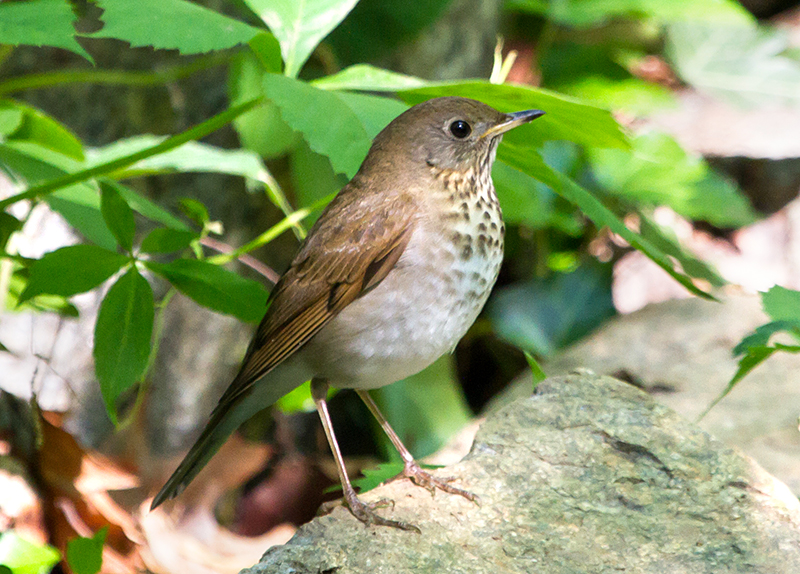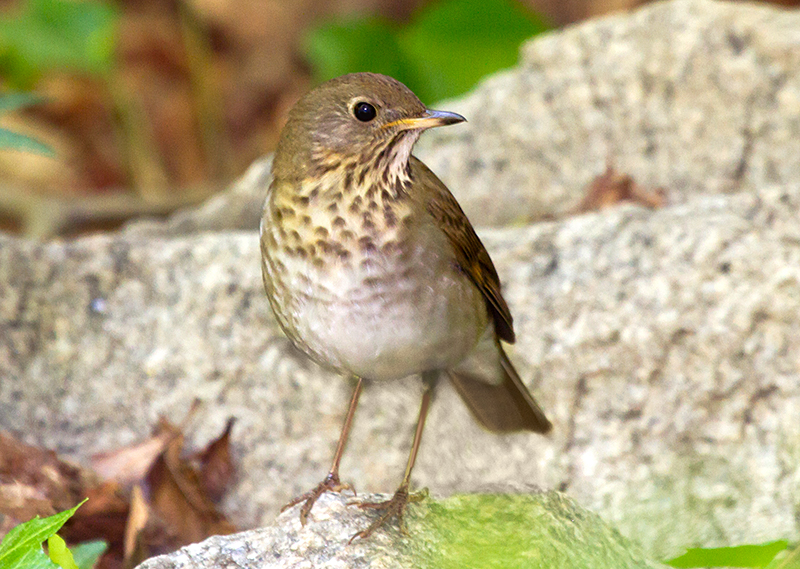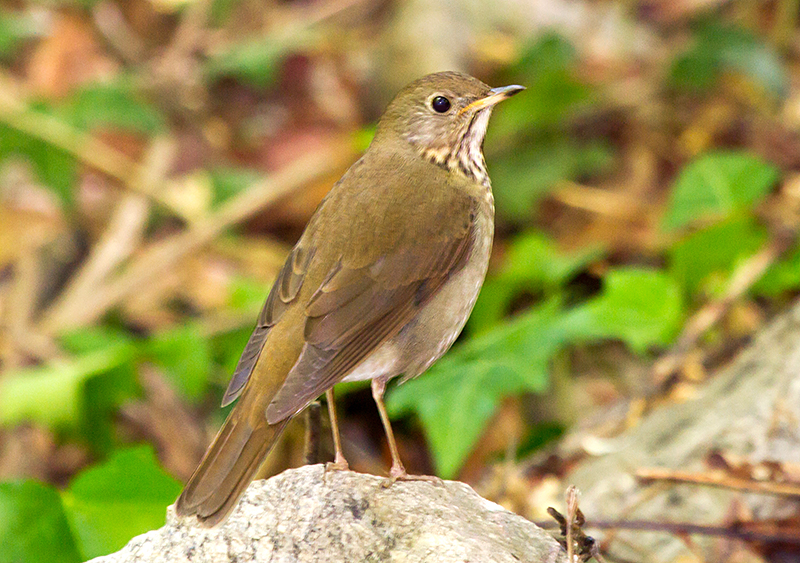| Early Spring Date: | April 27 |
| Late Spring Date: | May 31 |
| Best Dates to See in Spring: | May 8-27 |
Bicknell's Thrush
Catharus bicknelli
| Infrequently Seen |
Spring: Monticello Park is one of the most reliable places to see Gray-cheeked Thrushes in the Washington metro area. They usually are a late migrant, and the best time to look for them is during the third week in May. In a typical spring, there might be about 30 sightings. Bicknell's Thrushes used to be considered part of the same species as the Gray-cheeked, and there is no totally reliable way to tell the two species apart by plumage. Both species breed in the far north. Gray-cheeked Thrushes breed across Canada and in Alaska. Bicknell's Thrushes breed in eastern Canada and some small pockets in New England.
Fall: Gray-cheeked Thrushes pass through Monticello in small numbers in the fall. The most likely to time to see one is during the last week in September and the first week in October.
Where to See Them in the Park
Gray-cheeked Thrushes usually are seen foraging on the ground on the ridge, or sometimes near the back of the park on the knoll side of the stream. They occasionally will go into the stream, sometimes near the bridge.
Physical Descriptions

The Gray-cheeked Thrush looks a lot like a Swainson's Thrush. The colors of the head and back of the two species are similar, and both have heavily spotted breasts. The eyering of the Gray-cheeked is only partial, unlike the white spectacles on the Swainson's. You sometimes can see the grayish tinge on the cheek. One way to identify a Gray-cheeked is to rule out the fieldmarks for the more common Swainson's. Seeing fieldmarks clearly on thrushes on the ground in a shaded section of the park can be difficult.


In 1998, the Bicknell's subspecies of the Gray-cheeked Thrush became a separate species. Thrushes at Monticello identified as Gray-cheeked might in fact be Bicknell's, but there is no easy way to know for sure. The Bicknell's usually has a rufous tail like a Hermit Thrush, but a small number of Gray-cheeked also have a reddish tail. You cannot differentiate males from females in either species, and the plumage of both is similar in the spring and fall.
Vocalizations
The songs of the two species differ slightly, but not enough for most people to be able to easily tell them apart. Both songs are thin, high-pitched, descending, and nasal. The call notes are similar also.
Hear the vocalizations of the Gray-cheeked Thrush.
Hear the song of the Bicknell's Thrush.
Notes
David Sibley wrote an article about the differences between Gray-cheeked and Bicknell's Thrushes. Some birders at Monticello have recorded the vocalizations of a Gray-cheeked/Bicknell's Thrush and sent the recording to a university for analysis. The fact that birders must resort to such measures is an indication of how difficult these two species are to tell apart.
Origin of Names
Common Names: Gray-cheeked from the gray feathering on the cheek. Bicknell's after the American ornithologist Eugene Pintard Bicknell, who was a founding member of the American Ornithologists' Union. The origin of thrush is unclear, but it might come from the Anglo-Saxon thryce, which means thrush.
Genus Name: Catharus means pure, possibly in reference to thrush song.
Species Names: Minimus means least, even though the Gray-cheeked is the largest of the Catharus thrushes. Bicknelli after American ornithologist Eugene Pintard Bicknell.
Gray-cheeked Thrush video footage
Bicknell's Thrush video footage
Return to the Index
